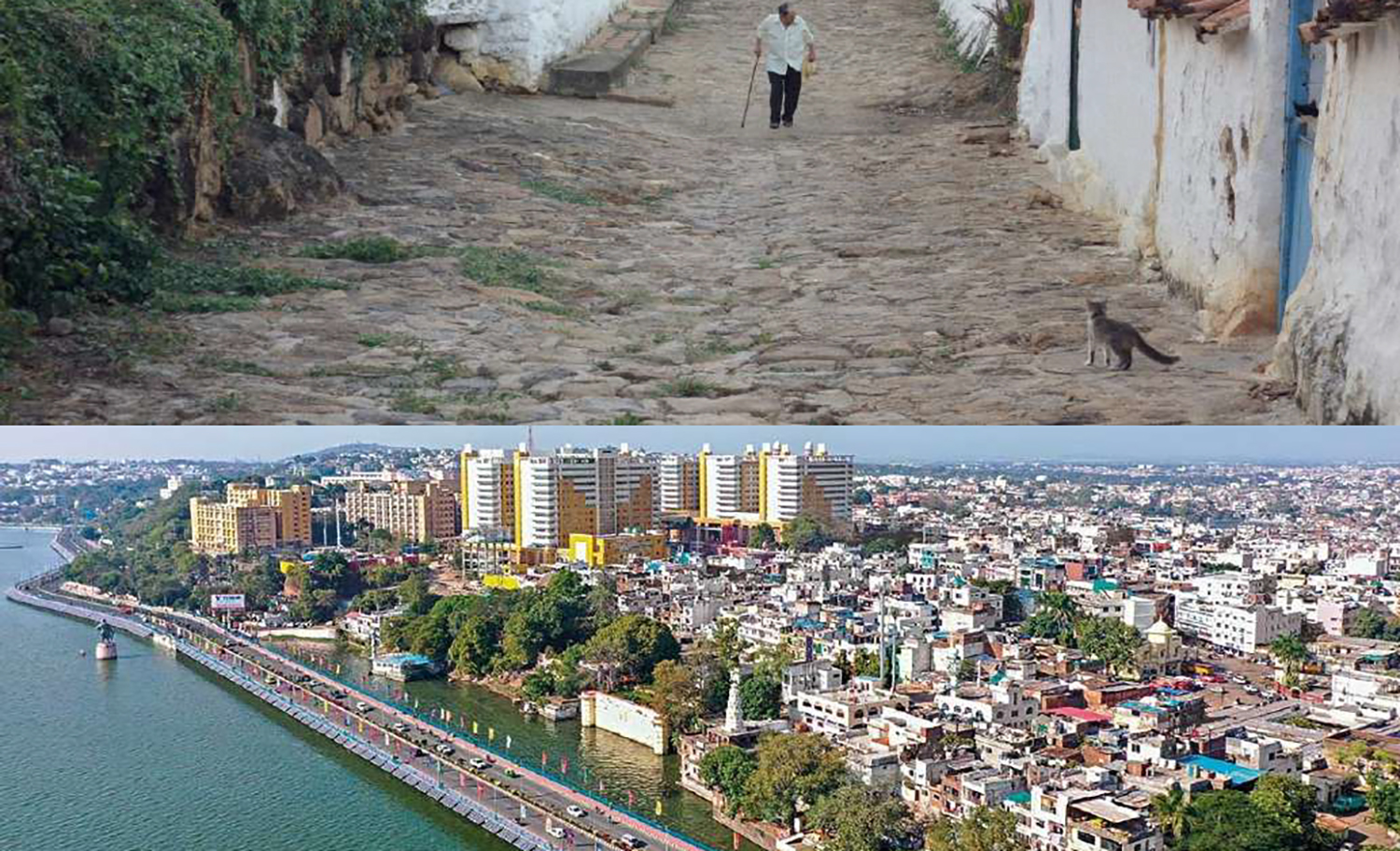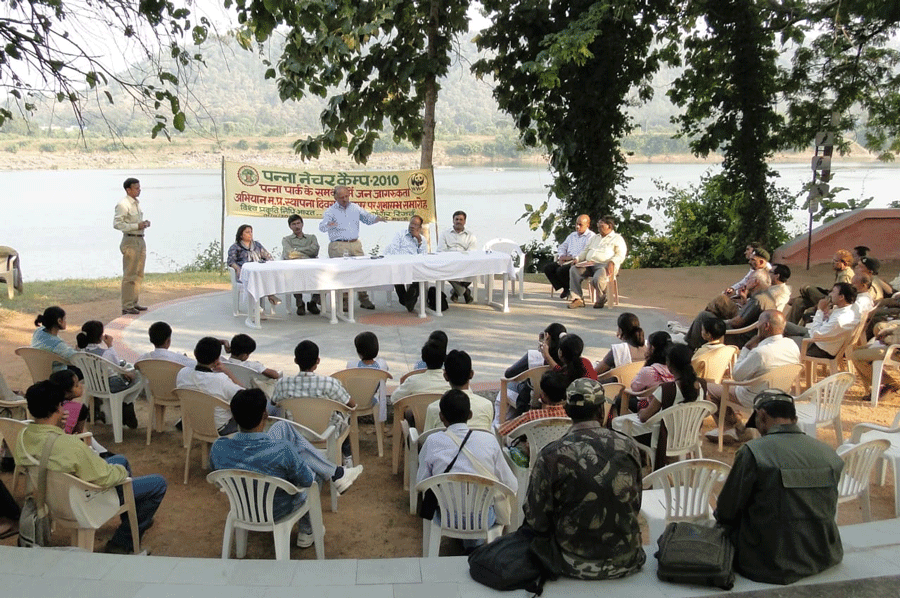TIGER REINTRODUCTION : A CHALLENGING CONSERVATION EXERCISE IN MADHAV TIGER RESERVE: A BOLD STEP IN CONSERVATION HISTORY
Uttam Kumar Sharma, IFS
The reintroduction of tigers into Madhav Tiger Reserve (MTR), formerly known as Madhav National Park before its declaration as a tiger reserve on 7th March 2025, marks a pioneering conservation effort in India. While there have been two earlier reintroduction successes-Sariska Tiger Reserve (STR) (2008) and Panna Tiger Reserve (PTR) (2009)-the MTR initiative stands apart for three key reasons:
What Makes MTR’s Reintroduction Unique:
1. A 50-Year Gap in Tiger Presence: Unlike Sariska and Panna, which lost their tiger populations just a few years before reintroduction, MTR had been devoid of wild tigers for over five decades. The ecological and administrative implications of this absence were significant. There was no living memory or field-level experience of managing wild tigers in the reserve.
2. Urban and Infrastructure Proximity: MTR’s boundaries directly touch Shivpuri city, and two national highways traverse the reserve. This is in contrast to Sariska and Panna, whose landscapes are relatively isolated from urban sprawl. The proximity of MTR to urban human settlements posed additional challenges in managing human-wildlife interactions and ensuring safety for both people and wildlife.
3. Without any Support from any other Institution: Another distinctive feature of the MTR tiger reintroduction is that it was planned, executed, and managed entirely by the Madhya Pradesh Forest Department, without any external institutional assistance. In the earlier reintroductions at Sariska (STR) and Panna (PTR), the Wildlife Institute of India (WII) provided long-term technical and operational support-covering areas like scientific planning, field training, behavioural studies, and post-release monitoring. In contrast, the MTR project was completely self-reliant. From staff training and capacity building to tiger management, tracking, data collection, and adaptive decision-making, every step was led and implemented solely by the MP Forest Department.
Reintroduction Efforts of the Past Two Years in MTR:
a. Building from Ground Zero: The prolonged absence of tigers also meant that there was no existing field experience of managing wild tigers within MTR. In contrast, the staff at PTR and STR had institutional experience and training in tiger monitoring, conflict management, and ecological dynamics involving large carnivores. For MTR, this was not the case. The field staff had never managed a wild tiger during their service careers.
Given that tiger reintroduction is a highly sensitive and intensive conservation operation, this lack of experience was a major initial hurdle. Regular and skilled monitoring is critical for understanding tiger movement, behaviour, health, and territory establishment-factors that determine the success or failure of any reintroduction program. Understanding tiger behaviour requires field intuition and observational depth, which typically develops through hands-on experience. Initially, field staff were understandably apprehensive about tracking tigers on foot, especially using radio telemetry equipment in dense and remote terrains. But under the leadership, training, and mentorship of experienced officers, the team gradually gained the skills and confidence needed for safe and effective tiger monitoring.
b. Overcoming the Challenge: To compensate for this gap, MTR had to start from scratch:
- Capacity-building programs were organized to train staff in tiger ecology, monitoring protocols, conflict response, and field data collection.
- A dedicated monitoring infrastructure, including camera traps, GPS tracking, and rapid response teams, was established.
c. Timeline of Reintroduction Events:
I PHASE:
- 10th March 2023: Two tigers (one male from Satpura Tiger Reserve and one female from Bandhavgarh Tiger Reserve) were translocated to MTR.
- 13th March 2023: Another tigress was brought from Panna Tiger Reserve, bringing the total number to three tigers.
All three were housed briefly in soft-release bomas for about 10 days before being released into the wild-first the male, followed by the females. All tigers were equipped with satellite-GPS cum VHF radio collars for real-time monitoring.
II PHASE:
Two more tigers-a female from PTR and a male from Bandhavgarh Tiger Reserve- were brought to MTR on 10th March 2025 and 3rd April 2025 respectively. Both are being continuously tracked with the help of satellite cum radio collar.
d. Monitoring Challenges and Field Learning
Monitoring these reintroduced tigers was initially a daunting task. Collared tigers often moved into remote and inaccessible forest patches, making it difficult for monitoring teams to track them by vehicle. At times, even satellite data had delays due to poor signal in dense forest cover.
Three dedicated monitoring teams were assigned-one for each tiger. Field staff were slowly trained and encouraged to walk on foot, guided by experienced officers. The process of learning tiger behaviour firsthand through field tracking, observation, and response turned out to be both challenging and transformative.
As collar batteries neared the end of their lifespan (usually one year), it became clear that long-term monitoring would require a combination of collaring and indirect methods.
e. From Collars to Field Craft: Developing Long-Term Monitoring Protocols: During this period, field staff were trained in indirect monitoring techniques, including:
- Camera trapping
- Pugmark and track identification
- Pressure Impression Pads (PIPs)
- Scat and kill site identification
- Listening to alarm calls and observing ecological signs
Protocols were formalized, and mandatory field record-keeping was introduced. Continuous on-ground training, supervision, and feedback led to a remarkable transformation in field capacity.
Within a year, MTR staff-once novices-became proficient in tiger tracking and behaviour interpretation. Even after collars stopped transmitting, the reintroduced tigers were being reliably monitored through these alternative methods within the boundaries of MTR.
f. Ecological and Institutional Impact of Tiger Reintroduction in MTR:
The reintroduction of tigers has had a dual impact:
1. Ecological Revival: The presence of tigers is catalysing the revival of predator-prey dynamics, indicating improved ecosystem health.
2. Institutional Strengthening: The entire field staff, once inexperienced in big cat management, has now evolved into a trained, confident, and skilled force-a long-term asset for tiger conservation in central India.
g. Reproductive Success:
Sariska (STR) took more than four years after reintroduction for successful reproduction, while in Panna (PTR) first birth took place in nearly a year after reintroduction. Reproductive success is an indication of tigers adapting to the new habitat. This adaptation is result from habitat suitability, minimal disturbance, and effective field protection.
In MTR, on 17th September 2024, camera traps captured images of the tigress from Bandhavgarh with two cubs aged around 3 months. Reproductive success within 15 months of reintroduction-a landmark moment indicating successful breeding in the wild within MTR.
Tiger Reintroduction: A Challenging Conservation Exercise:
Successful tiger reintroduction is a highly technical, resource-intensive, and complex conservation exercise. It demands specialized skills, meticulous planning, hard work, and sustained monitoring over years-often with unpredictable outcomes.
India’s past experiences highlight this range of possibilities:
- Sariska Tiger Reserve (STR) – The reintroduction, begun in 2008, has progressed slowly, with the population taking time to establish and expand.
- Panna Tiger Reserve (PTR) – In contrast, the 2009 reintroduction showed remarkable success, with the population growing steadily and contributing to genetic diversity in central India.
- Satkosia Tiger Reserve, Odisha (2018) – This ambitious inter-state reintroduction faced major setbacks. A pair of tigers-Sundari (female) and Mahavir (male)-was brought from Kanha National Park, Madhya Pradesh. Unfortunately, the male died, and the female was confined to the Raigoda enclosure for 28 months before being shifted back to Kanha, leading to the project’s suspension.
- Similipal Tiger Reserve, Odisha (recent) – An ongoing effort to enhance genetic diversity by introducing two tigresses-Zeenat and Jamuna-has been met with considerable challenges, underscoring the difficulty of integrating new individuals into established wild populations.
These examples demonstrate that tiger reintroduction is never guaranteed to succeed. It requires not only scientific precision and institutional readiness but also adaptability, rapid problem-solving, and strong field-level commitment.
Conclusion: Madhav Tiger Reserve represents a bold and visionary experiment in rewilding. Unlike past reintroduction efforts, it had to overcome a complete loss of predator presence, field knowledge, and management experience. Its success will not only restore a lost legacy but also offer a new model for reintroduction into long-vacant landscapes, especially those adjacent to urbanized and infrastructure-dense regions.
If successful, MTR will stand as a testimony to India’s evolving conservation capacity-one that can reclaim lost ground, rebuild ecological systems, and redefine coexistence in a rapidly changing world.

Author is
An IFS Officer in M.P












